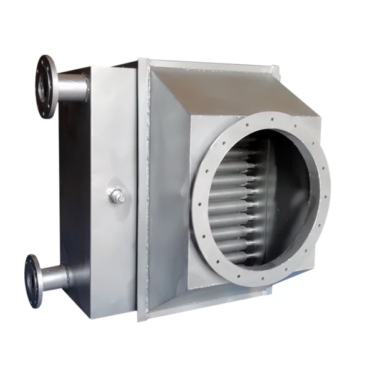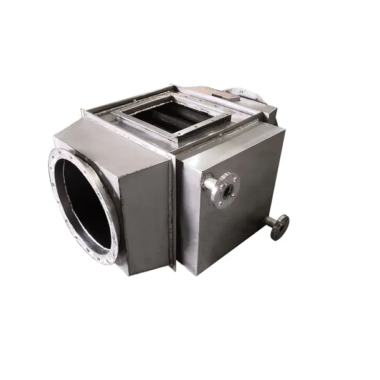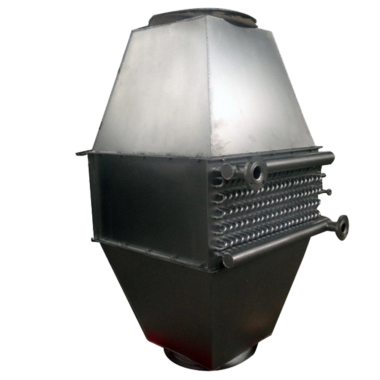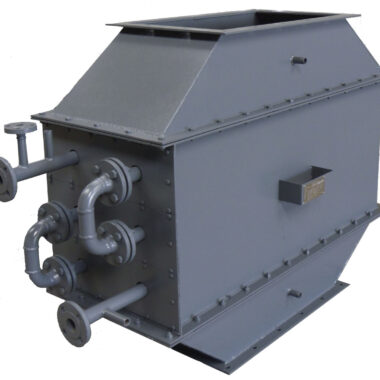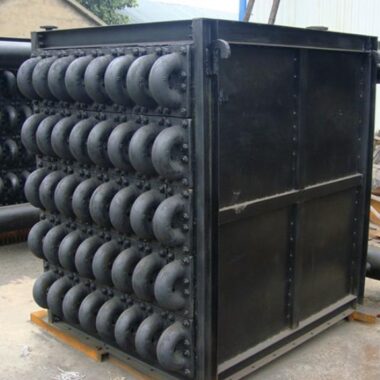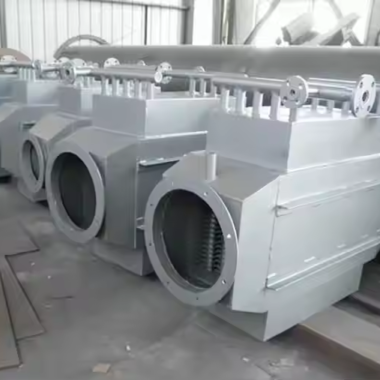Air Preheater
Air Preheater is a heat exchanger type that preheats combustion air by recovering heat from flue gas that leaves the combustion process. Alternatively, an air preheater can be used to recover heat from exhaust air from a dryer or oven and preheat the inlet drying air.
Advantages of air preheater
- Increased efficiency of boilers
- Increased evaporative rate
- Combustion is accelerated with less soot, smoke, and ash
- Low-grade and inferior-quality fuels can be used
Types of Air Preheater
- Tubular Type Air Preheater
- Fin Tube Type Air Preheater
Tubular Type Air Preheater
A tubular type air pre-heater consists of a large number of tubes. Flue gases pass through the tube. Air flows over the tubes. Baffles are provided to pass the air number of times over the tubes. A soot hopper is provided at the bottom to collect the soot.

Working Principle

The air preheater receives hot flue gases from the boiler through the flue gas inlet positioned at the top and atmospheric air enters through the air inlet. Both air and flue gases flow in a crossflow manner, and the tubes efficiently absorbs heat from the flue gases and transferring it to the atmospheric air. Positioned at the bottom of the preheater is a soot hopper designed to collect and store soot and ash. This process effectively preheats the air, preparing it for further combustion in the boiler.
Benefits of Tubular Type preheater
- Stability of combustion is improved by usage of hot air
- Elevates efficiency in steam boilers
- Reduces excess air
- Increases steam-generating capacities of boilers
- Helps in energy conservation by extracting surplus heat from flue gases
- Provides greater stability to steam boilers by recycling existing hot air
- Reduces unburnt fuel particles in flue gas, thus achieving complete combustion
Fin Tube Type Air Preheater
Finned tubes are the main components of heat exchangers. They are a series of tubes where fins have been added on the outside to increase the contact area with the outside fluid, to exchange heat and between the fluid inside the tube and the fluid outside the tube.
In a finned tube heat exchanger, fins are outside the tubes. The liquid will flow through the finned tube with air or another gas flowing outside, increasing the heat transfer rate due to the greater heat transfer surface area.
The fins on a crossflow tube exchanger are usually circular or square radial fins. Fins should be longitudinal rather than radial in a counterflow or can be parallel flow fin tube exchangers. In an enclosed heat exchanger, finned tubes work as internal tubes.


